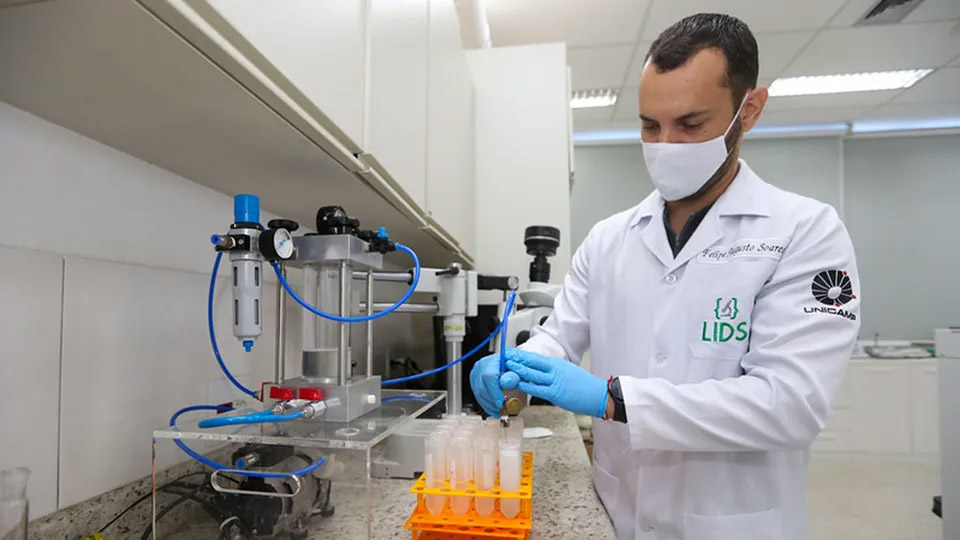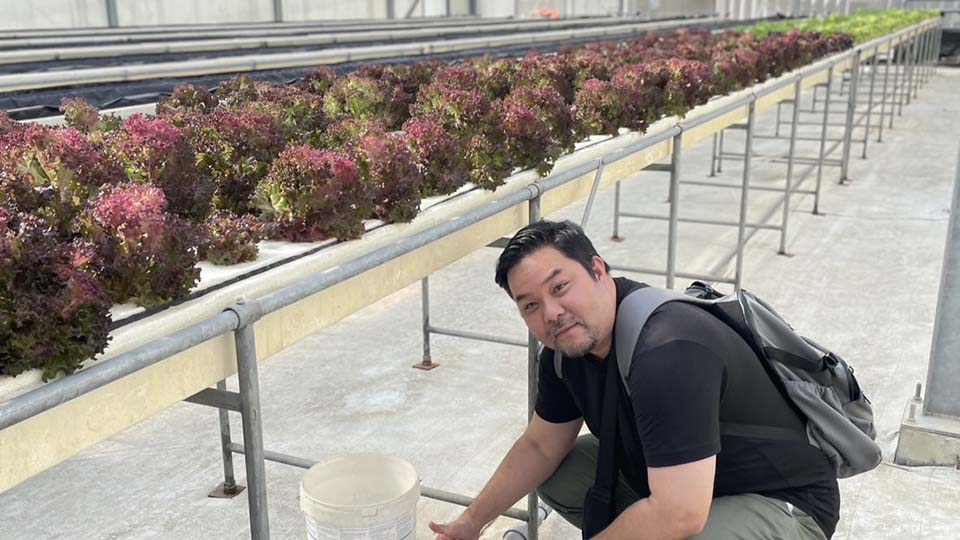Kiyoshi Amemiya, Japan
experience.
The United Nations (UN) estimates that there are more than 110 million active mines buried in 70 countries with an equal number stockpiled around the world waiting to be planted, and over 20,000 people are killed or maimed by mine explosions in a single year - one person every 20 minutes. Many experts believe that it would take more than 1,100 years to clear the entire world of mines, provided that no additional mines are planted. Mr. Kiyoshi Amemiya, president of Yamanashi Hitachi Construction Machinery Co. Ltd. (Yamanashi Hitachi), is an engineer who has dedicated his life to eradicating landmines with his inventions.
At the age of 23, Mr. Amemiya used his previous experience at a construction machinery company in Tokyo and founded a maintenance factory for construction machinery in Yamanashi City (approximately 100 kilometers west of Tokyo) in 1970. Ten years later, his factory became a distributor and designated factory for Hitachi Construction Machinery, Co., Ltd. (Hitachi), and in 1990 it became a Hitachi dealership, and subsequently changed its name to Yamanashi Hitachi.
In 1994, Mr. Amemiya visited Cambodia to promote the company’s equipment for the reconstruction of the country after the lengthy civil war, however, he found that the time was not yet right for business. Instead, Mr. Amemiya met many victims of landmines, including children and old women without hands or feet. One maimed woman appealed to him saying "You are Japanese. Do something, please help us." Those words moved him, and he became determined to develop a technology to combat landmines and to return the land to a safe state where children can play without fear.
Research and development
Following his visit to Cambodia, the inventor formed a project team consisting of six staff, including himself, to develop a demining machine. In order not to interfere with the company’s mainstream business, the team’s research and development (R&D) was conducted outside regular office hours. When the research started, Mr. Amemiya already had an idea to construct a machine based on a hydraulic excavator, but faced various technical challenges including requirements for it to be blast-proof and resistant to heat up to 1,000 degrees Celsius. From 1995 to 1998, he visited Cambodia more than 20 times to listen to the people’s concerns and identify the needs in the field. The requests of the local people led to the invention and development of a two-in-one demining and land-cultivation machine.

big drum outfitted with a series of chains that beats the ground while cultivating
the land with a ripper at the back of the vehicle.
In 1998, Mr. Amemiya and his team completed the first demining prototype, a heavy duty vehicle outfitted with hard-steel, bulletproof glass and rotary cutters, which could excavate the ground and blast landmines in place, while simultaneously cultivating the land. Mr. Amemiya’s invention broke through the conventional demining method: to detect a landmine with a metal detector and dig it out from soil manually, and then place an explosive device on top of it and blow it up on the spot. Initial testing on the machine’s blast-proofness, functionality and safety was conducted in Cambodia with successful results. Nevertheless, despite his humanitarian motive, Mr. Amemiya was confronted with challenges in supplying his demining equipment abroad. Because of the nature of the invention, its export was alleged to conflict with Japan’s national principles of forbidding “arms” exports.
After a two year negotiation with the Japanese government, in 2000 Mr. Amemiya was permitted to provide, as a part of Japan’s humanitarian assistance, two demining machines for the Cambodia Mine Action Center (CMAC) and one for the Afghan Technical Consultants (ATC), which is one of the non-governmental organizations (NGOs) working under the umbrella of the United Nations Mine Action Programme for Afghanistan. The following year, 20 demining machines were supplied to the government of Viet Nam.
After some experience in the field, it was found that the rotary cutter type demining equipment was effective to explode anti-personnel landmines, but was vulnerable to anti-tank landmines. Mr. Amemiya continued the investigation and in 2003 he developed a flail type demining machine employing a big drum outfitted with a series of chains that beats the ground. Comprehensive tests were conducted with successful results in both Afghanistan and Cambodia. Mr. Amemiya’s inventions are tailor-made in order to effectively remove landmines placed in very different geographic conditions from rivers and mud areas to deserts, shrubs and mountains.
At the time of delivery, Mr. Amemiya and technicians of Yamanashi Hitachi go to the respective country to provide training on how to use and maintain the equipment with local staff, aiming at self-sustained operation in the field. Between 2000-2011, Yamanashi Hitachi has provided 70 demining machines to seven countries: Afghanistan, Angola, Cambodia, Colombia, Nicaragua, Thailand and Viet Nam.
Patents

land and blasts anti-personal landmines on site
(Application no.: 2003-33773, Industrial Property
Digital Library).
Mr. Amemiya protects his inventions with patents and currently holds 15 patents in Japan. His first patent application was filed with the Japan Patent Office (JPO) in 1997 for a rotary cutter type landmine exploding apparatus and exploration device. In 1998, a second application was filed with the JPO for a rotary cutter type landmine exploding apparatus and landmine disposal method. For these technologies and methods, an international application was also filed under the Patent Cooperation Treaty (PCT) entering in Canada, the United States of America, and the member states of the European Patent Office (EPO) into the national/regional phase.
In 1999, an application was filed with the JPO for a landmine exploding and agricultural land cultivating apparatus. In 2002, two applications were filed with the JPO for a landmine exploding and shrub harvesting apparatus, and a rotary cutter type landmine exploding apparatus. In 2003, four national applications were filed for two rotary cutter type landmine exploding machines, a landmine exploding apparatus control method and system, and a flail type landmine exploding apparatus. In 2004, two other national applications were filed for a landmine exploding machine with rotary cutters and flails, and a flail type landmine exploding machine. In 2006, four applications were filed with the JPO for flail type landmine exploding apparatuses.
Financing
Landmine removal is a lengthy and expensive business. It is said that landmines cost as little as US$ 3 each to manufacture but can cost up to US$ 1,000 to remove. During 1995-2007, the total deficit of Yamanashi Hitachi's demining equipment business reached Japanese yen 750 million (approximately US$ 8.8 million), which had to be offset by the surplus from the company’s mainstream business – repair, maintenance and sales of construction machinery.
When Yamanashi Hitachi became a subsidiary of Hitachi, the company’s operations were strengthened and its business opportunities broadened through Hitachi’s worldwide network. Mr. Amemiya’s demining equipment and operations were also supported by Hitachi as one of the group’s core Corporate Social Responsibility (CSR) activities. R&D activities for the demining machines also received financial backing from the New Energy and Industrial Technology Development Organization (NEDO) – Japan's public management organization promoting R&D. Finally, at the request of recipient countries, Japan's Official Development Assistance (ODA) is used to order the production of demining machines from Yamanashi Hitachi.
Business results

dog examines the land after the operation of the
demining machine (Application no.: 2006-84636,
Industrial Property Digital Library).
The turning point of the demining equipment business was when Mr. Amemiya was able to provide the first machine for Cambodia as part of Japan’s humanitarian assistance in 2000, six years after his first visit to the country, and soon after the Convention on the Prohibition of the Use, Stockpiling, Production and Transfer of Anti-Personnel Mines and on their Destruction (the Mine Ban Treaty) came into force in 1999.
Mr. Amemiya has also been featured in various television programs, newspapers and magazines from the mid-2000s onwards. He has received various awards including the grand prize at Japan’s Monozukuri Award by the Ministry of Economy, Trade and Industry (METI); the Japan Philanthropy Award; the DEVNET Award; a medal from the Prime Minister of Cambodia; and a message of gratitude from the Vice President of Colombia.
In Cambodia, as a result of Mr. Amemiya’s demining equipment, it is estimated that more than 400,000 landmines were eliminated and more than 220 square kilometers of land were turned into safe lands such as schoolyards, rice fields and sunflower fields. In Nicaragua, orange fields were cultivated after using the machines and it is estimated that 600,000 cases of oranges are produced annually from these fields, generating US$ 1.5 million in exports. It is expected that palm trees and coffee plants will be planted in Colombia's mountainous regions where two demining machines were delivered in 2010, at the request of the government of Colombia.
A life dedicated to a humanitarian mission
The success factors of the demining equipment lie on Mr. Amemiya’s strong desire to provide a safer environment for people living near minefields, and his comprehensive R&D approach to meet local needs. Sustained by a mainstream business, the company developed breakthrough technologies that drastically increased the speed and the safety of those who clear landmines, and the quality of livelihood of the residents in the affected regions. Protection of the inventions through patents facilitated establishing the founder’s reputation and credibility as a pioneer of demining equipment, which brought more opportunities for him to carry out his humanitarian mission.



